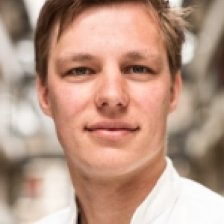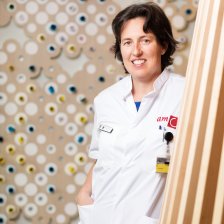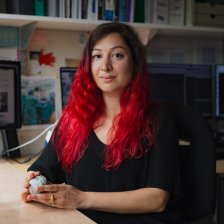Rationale and common goals
The objective of the program Cellular & Molecular Mechanisms is to find causal relationships in brain mechanisms of the healthy brain and the origin of disease. We investigate molecular processes and integrate such processes at higher levels of organization: organelles, cells, networks and the whole brain. In order to treat brain pathologies, it is necessary to improve the understanding of basic brain functions and assess which molecular and physiological mechanisms are involved in those functions. The strength of this theme is its uniform importance for all specific brain disease indications and its links to all other programs. Moreover it includes cutting edge technology and the experts that are needed to implement this.
Key indicators
- Mechanistic research.
- Aiming to elucidate cause and consequence in biological and pathological processes.
- Connecting genome to phenotype.
- Using quantitative as well as qualitative approaches.
Assets
- Top class scientists: top papers, 6 VICIs, 2ERCs, coordinators of large EU projects.
- Cutting edge technology and infrastructure: quantitative proteomics, life cell imaging, FACS, laser capture dissection, brain organoid culture, In utero electroporation, in vivo multi-unit recordings and optogenetics, cellomics, computational modeling.
- Excellent integration of expertise into joint multidisciplinary projects.
- Availability of essential animal models systems.
Translational links
Cellular and Molecular Mechanisms is capable of nurturing all clinical themes in Amsterdam Neuroscience while also maintaining good connections to industry (biotech, pharma), including spin-offs (Sylics BV and Macrobian BV) and also is able to stimulate new initiatives due to its strong scientific and innovative nature.
Making the difference
The essence of this research program is:
- The high quality-driven research with strong team spirit and availability of involved experts on all topics.
- The ability to bridge the gap between genome information and neurobiological processes and behavioral phenotypes.
- The use of cutting edge technology and availability of unique animal models to solve complex questions.
- The implementation of human embryonic stem cell - and patient derived induced pluripotent stem cell (iPSC) strategies in order to generate new models that connect fundamental brain research towards clinical relevant questions.
Program leaders
Taskforce team
Program members
-
Adlin Abramian
-
Alicia Sanz Sanz
-
 Amélie FréalPI DR.
Amélie FréalPI DR. -
 Andries KalsbeekPI Prof. PhD
Andries KalsbeekPI Prof. PhD -
Angela Getz
-
Ann-Sofie SchauwvliegheMD
-
Bart CornelissenMSc
-
Bastian Meth
-
 Bernardo de Azevedo Pinto Castro Maciel
Bernardo de Azevedo Pinto Castro Maciel -
Bwee Poll - ThePROF.DR.
-
 Carlos Fitzsimonsdr.
Carlos Fitzsimonsdr. -
Chaim HuijserMD PhD
-
Chaya Rodrigues Pereira
-
Christiaan Levelt
-
Christian A. Lohmann
-
 Chun-Xia YiPI DR.
Chun-Xia YiPI DR. -
 Clara van KarnebeekPI Prof. MD PhD
Clara van KarnebeekPI Prof. MD PhD -
 Cyriel Pennartzprof. dr.
Cyriel Pennartzprof. dr. -
Dan Daj
-
Daniele Avitabile
-
Desiree SmithDR.ING.
-
Djai Heyer
-
Dorien Maas
-
Elise Zwerus
-
Enzo ScutiglianiDR.
-
 Eric ReitsPI Prof. PhD
Eric ReitsPI Prof. PhD -
Erwin van Vlietdr. ing.
-
Esmeralda BosmaMSc
-
Esther van Duin
-
 Frank Koopmans
Frank Koopmans -
Galia Polyak
-
GEM Abbink
-
 Guus Smit
Guus Smit -
 Huib Mansvelder
Huib Mansvelder -
Ilma Revers
-
Inge DijkstraMEng
-
 Ingeborg KlaassenPI PhD
Ingeborg KlaassenPI PhD -
Isabell EhmerMSc
-
 Jan van WeeringPI PhD
Jan van WeeringPI PhD -
Jasper Anink
-
Jasper Zantvoord
-
 Javier Triñanes RamosDR.
Javier Triñanes RamosDR. -
Jean Pie
-
Jessica Goedhoop
-
 Johana Jarkulischová
Johana Jarkulischová -
Johannes van der VoornDR.
-
Judith Ensink
-
Julien Fiorilli
-
Jurjen Broeke
-
Karlijne GeijtenbeekMSc
-
Katy van GalenDRS. DRS.
-
Kim Verdaasdonk
-
Lars van der Heidedr.
-
Laura TsengMSC.
-
Lennart CornelissePI PhD
-
 Leonie MenkeDR.
Leonie MenkeDR. -
Lianne Klaver
-
Maarten KamermansProf. PhD
-
Madeleine VaderDRS.
-
Maik Derksen
-
Maj GigengackMSC. MSC.
-
Maj Holzel
-
Manon KappelhofDRS.
-
Mara van der HoevenMSc
-
Marc EngelenPI DR.
-
Marcel Oberlaender
-
Marco Hoekmandr.
-
Margo van der KnaapPI PROF.DR.
-
Marianna BugianiDRS. Dr.
-
Marieke Meijer
-
 Marieke Meijerdr. DR.
Marieke Meijerdr. DR. -
Marisa Simas MendesMSC.
-
 Mark Verheijen
Mark Verheijen -
 Marten Smidtprof. dr.
Marten Smidtprof. dr. -
Martijn van den HeuvelPI DR.
-
Matthijs VerhagePI PROF.DR.
-
 Meagan DoppegieterMSc
Meagan DoppegieterMSc -
 Miranda Moore
Miranda Moore -
Mirjam WamelinkDRS.
-
MS van der Knaap
-
 Natalia Goriounova
Natalia Goriounova -
 Natia Shamugia
Natia Shamugia -
Nicki Covena
-
 Nicole van der WelDR.IR.
Nicole van der WelDR.IR. -
 Nicole WolfPROF.DR.
Nicole WolfPROF.DR. -
Nina FransenDR. DR.
-
Nitash Zwaveling - SoonawalaMD PhD
-
Nora RuniaBSc MSc
-
 Olvert BerkhemerDR.
Olvert BerkhemerDR. -
Ozlem Engin
-
Pieter RoelfsemaPI Prof. PhD
-
Priyanka Rao
-
 Prof.dr. AronicaPI DR.
Prof.dr. AronicaPI DR. -
Ralph Hamelink
-
Reinier BakkerMSc
-
Reinier SchlingemannPI PROF.DR.
-
René Wilbers
-
Renee Pullen
-
Rob OfmanBEng
-
Roberto Montoro Ferrer
-
Roel de Haan
-
 Roel MockingPI MD MSc PhD
Roel MockingPI MD MSc PhD -
 Rogier MinDR.
Rogier MinDR. -
Romina Ambrosini Defendi
-
 Ruud Toonen
Ruud Toonen -
Sabine Schipper - KromPhD
-
 Sabine Spijker
Sabine Spijker -
Salma Ramon Carrasco
-
 Sander GroffenDR.IR.
Sander GroffenDR.IR. -
Saskia MaasDRS.
-
 Simone Mesmandr.
Simone Mesmandr. -
Stan Driessens
-
 Stephan KempPI DR.
Stephan KempPI DR. -
Susanne la FleurPI DR.
-
 Sylvia HuismanPhD
Sylvia HuismanPhD -
 Tara ArbabMSc
Tara ArbabMSc -
 Tessel BoertienDR.
Tessel BoertienDR. -
Thomas Blok
-
Tim Heistek
-
Tjerk Swinkels
-
Tom Coopmans
-
 Truus Abbink
Truus Abbink -
 Vanessa DonegaDR.
Vanessa DonegaDR. -
Vera WiersmaDR.
-
 Vincenzo Sorrentino
Vincenzo Sorrentino -
Vionna TsangMSc
-
Vivienne Aline Bauer
-
 VM HeinePI PROF.DR.
VM HeinePI PROF.DR. -
Wendela Leeuwenburgh - Pronk
-
 Wiep ScheperPI PROF.DR.
Wiep ScheperPI PROF.DR. -
WN van Wieringen
-
Wouter van Elzelingen
-
Yi-Shu Wei
-
Yorrick JaspersMSc



